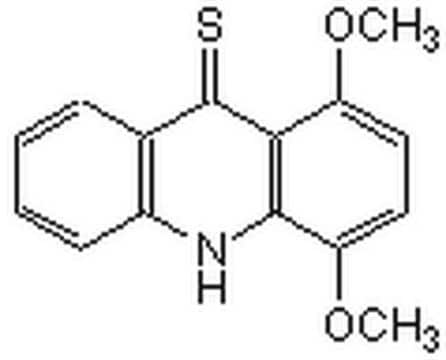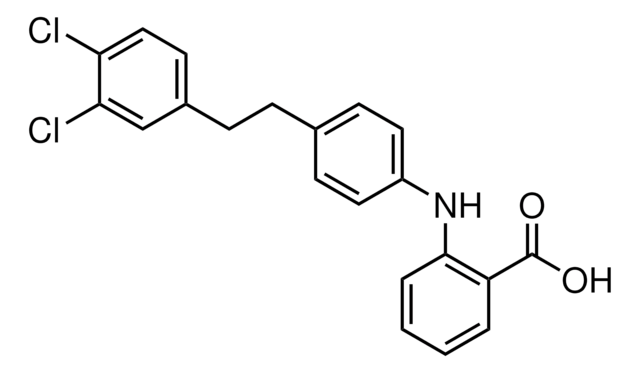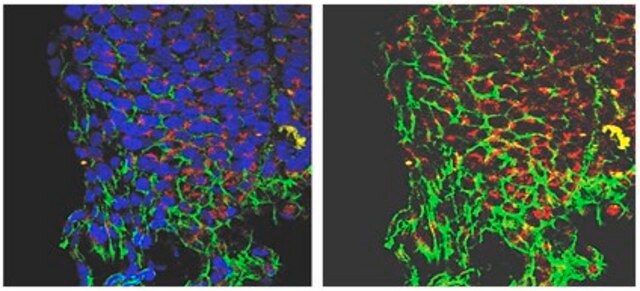513028
PD 166285
A cell-permeable, orally bioavailable, ATP-competitive, broad-spectrum tyrosine kinase inhibitor that suppresses angiogenesis both in vitro and in vivo.
Synonym(s):
PD 166285, PD166285, PD0166285, 6-(2,6-Dichlorophenyl)-2-(4-(2-(diethylaminoethoxy)-phenylamino)-8-methyl-8H-pyrido[2,3-d]pyrimidin-7-one, 2HCl, PDGFR Tyrosine Kinase Inhibitor XIX, Wee1 Inhibitor IV, PDGFR Tyrosine Kinase Inhibitor XIX, Wee1 Inhibitor IV, 6-(2,6-Dichlorophenyl)-2-(4-(2-(diethylaminoethoxy)-phenylamino)-8-methyl-8H-pyrido[2,3-d]pyrimidin-7-one, 2HCl, PD166285, PD0166285
About This Item
Recommended Products
Quality Level
assay
≥97% (HPLC)
form
solid
manufacturer/tradename
Calbiochem®
storage condition
OK to freeze
desiccated (hygroscopic)
protect from light
color
pale yellow
solubility
DMSO: 50 mg/mL
shipped in
ambient
storage temp.
2-8°C
InChI
1S/C26H27Cl2N5O2.2ClH/c1-4-33(5-2)13-14-35-19-11-9-18(10-12-19)30-26-29-16-17-15-20(25(34)32(3)24(17)31-26)23-21(27)7-6-8-22(23)28;;/h6-12,15-16H,4-5,13-14H2,1-3H3,(H,29,30,31);2*1H
InChI key
NADLBPWBFGTESN-UHFFFAOYSA-N
General description
Packaging
Warning
Reconstitution
Other Notes
Dimitroff, C.J., et al. 1999. Invest. New Drugs17, 121.
Roginskaya, V., et al. 1999. Leukemia13, 855.
Panek, R.L., et al. 1997. J. Pharmacol. Exp. Ther.283, 1433.
Legal Information
Storage Class
11 - Combustible Solids
wgk_germany
WGK 3
flash_point_f
Not applicable
flash_point_c
Not applicable
Certificates of Analysis (COA)
Search for Certificates of Analysis (COA) by entering the products Lot/Batch Number. Lot and Batch Numbers can be found on a product’s label following the words ‘Lot’ or ‘Batch’.
Already Own This Product?
Find documentation for the products that you have recently purchased in the Document Library.
Our team of scientists has experience in all areas of research including Life Science, Material Science, Chemical Synthesis, Chromatography, Analytical and many others.
Contact Technical Service








